Chromium(VI) oxide
- CAS No.
- 1333-82-0
- Chemical Name:
- Chromium(VI) oxide
- Synonyms
- CrO3;CHROMIUM TRIOXIDE;CHROMIC ANHYDRIDE;trioxochromium;Chromium(Ⅵ) oxide;chromic acid solution;Chromic;Chromic acid (H2CrO4);CHROMIC ACID ANHYDRIDE;NA 1463
- CBNumber:
- CB5304358
- Molecular Formula:
- CrO3
Lewis structure
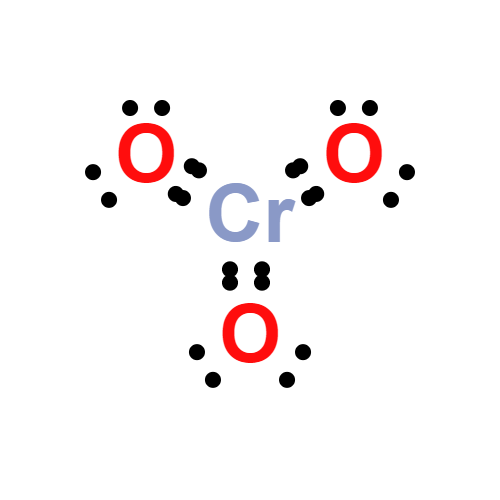
- Molecular Weight:
- 99.99
- MDL Number:
- MFCD00010952
- MOL File:
- 1333-82-0.mol
- MSDS File:
- SDS
| Melting point | 196 °C (dec.)(lit.) | ||||||||||||||
|---|---|---|---|---|---|---|---|---|---|---|---|---|---|---|---|
| Boiling point | 330 °C | ||||||||||||||
| Density | 2.7 | ||||||||||||||
| vapor pressure | 0Pa at 25℃ | ||||||||||||||
| Flash point | 250°C | ||||||||||||||
| storage temp. | Store below +30°C. | ||||||||||||||
| solubility | 1.667g/l | ||||||||||||||
| form | macroporous | ||||||||||||||
| pka | -0.61[at 20 ℃] | ||||||||||||||
| Specific Gravity | 2.7 | ||||||||||||||
| color | Reddish-violet | ||||||||||||||
| PH | <1 (100g/l, H2O, 20℃) | ||||||||||||||
| Water Solubility | Highly soluble | ||||||||||||||
| FreezingPoint | 170~172℃ | ||||||||||||||
| Sensitive | Hygroscopic | ||||||||||||||
| Merck | 14,2235 | ||||||||||||||
| crystal system | Nogata | ||||||||||||||
| Space group | Ama2 | ||||||||||||||
| Lattice constant |
|
||||||||||||||
| Exposure limits |
ACGIH: TWA 0.0002 mg/m3; STEL 0.0005 mg/m3 (Skin) OSHA: Ceiling 0.1 mg/m3 NIOSH: IDLH 15 mg/m3; TWA 0.0002 mg/m3 |
||||||||||||||
| Stability | Stable. Strong oxidizer. Reacts with most organic material in a violent and often explosive fashion. Moisture sensitive. | ||||||||||||||
| InChIKey | WGLPBDUCMAPZCE-UHFFFAOYSA-N | ||||||||||||||
| CAS DataBase Reference | 1333-82-0(CAS DataBase Reference) | ||||||||||||||
| EWG's Food Scores | 8-10 | ||||||||||||||
| FDA UNII | 8LV49809UC | ||||||||||||||
| NIST Chemistry Reference | Chromium trioxide(1333-82-0) | ||||||||||||||
| EPA Substance Registry System | Chromium(VI) trioxide (1333-82-0) |
SAFETY
Risk and Safety Statements
| Symbol(GHS) |      GHS03,GHS05,GHS06,GHS08,GHS09 |
|||||||||
|---|---|---|---|---|---|---|---|---|---|---|
| Signal word | Danger | |||||||||
| Hazard statements | H271-H301+H311-H314-H317-H330-H334-H335-H340-H350-H361f-H372-H410 | |||||||||
| Precautionary statements | P210-P260-P280-P303+P361+P353-P304+P340+P310-P305+P351+P338 | |||||||||
| Hazard Codes | O,T+,N,T | |||||||||
| Risk Statements | 45-46-9-24/25-26-35-42/43-48/23-50/53-62-8 | |||||||||
| Safety Statements | 53-45-60-61-36/37/39-28-26-22 | |||||||||
| RIDADR | UN 1463 5.1/PG 2 | |||||||||
| OEB | E | |||||||||
| OEL | TWA: 0.0002 mg/m3 (8-hours) | |||||||||
| WGK Germany | 3 | |||||||||
| RTECS | GB6650000 | |||||||||
| TSCA | Yes | |||||||||
| HazardClass | 5.1 | |||||||||
| PackingGroup | II | |||||||||
| HS Code | 28191000 | |||||||||
| Toxicity | LD50 oral (rat) 80 mg/kg PEL (OSHA) 0.1 mg (CrO3)/m3 (ceiling) TLV-TWA (ACGIH) 0.05 mg (Cr)/m3 |
|||||||||
| IDLA | 15 mg Cr(VI)/m3 | |||||||||
| NFPA 704 |
|
Chromium(VI) oxide price More Price(49)
| Manufacturer | Product number | Product description | CAS number | Packaging | Price | Updated | Buy |
|---|---|---|---|---|---|---|---|
| Sigma-Aldrich | 8.22266 | Chromium(VI) oxide for synthesis | 1333-82-0 | 100g | $38.3 | 2024-03-01 | Buy |
| Sigma-Aldrich | 8.22266 | Chromium(VI) oxide for synthesis | 1333-82-0 | 1kg | $172 | 2024-03-01 | Buy |
| Sigma-Aldrich | 8.22266 | Chromium(VI) oxide for synthesis | 1333-82-0 | 2.5kg | $343 | 2024-03-01 | Buy |
| Sigma-Aldrich | 232653 | Chromium(VI) oxide ReagentPlus , 99.9% trace metals basis | 1333-82-0 | 1kg | $134 | 2024-03-01 | Buy |
| Sigma-Aldrich | 232653 | Chromium(VI) oxide ReagentPlus , 99.9% trace metals basis | 1333-82-0 | 2.5kg | $266 | 2024-03-01 | Buy |
Chromium(VI) oxide Chemical Properties,Uses,Production
Chemical properties
It appears as dark red rhombic crystals or purple-red flakes. Soluble in water, alcohol, sulfuric acid and ether, do not dissolve in acetone.
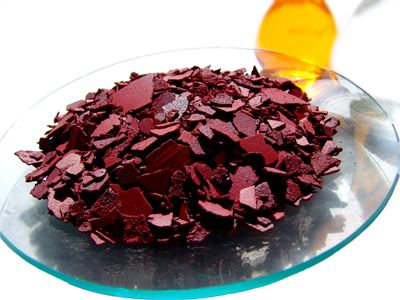
Uses
Chromium(VI) oxide is used for chromium plating; copper stripping; as an oxidizing agent for conversion of secondary alcohols into ketones (Jones oxidation); as a corrosion inhibitor; in purification of oil; and in ‘chromic mixtures’ for cleaning laboratory glassware.
1. It is used for electroplating and the manufacturing of high-purity metal chromium, dyes, synthetic rubber and refined oil, and so on
2. Chromium(VI) oxide is the main raw material of electroplating chrome. During the electroplating chrome production, chromium content has a large fluctuation within the range of 50 to 500 g/L. It should be mainly controlled of the appropriate temperature and current density. It can be obtained in the smooth plating of the bright coating. Its solution can also be used for zinc coating passive film, to improve the protection performance.
3. It is mainly used for electroplating industry as the raw materials of electroplating chromium used in making bicycles, sewing machines, watches, meters, flashlights and household hardware as well as for the production of high-purity metal chromium. It is the raw materials for the manufacture of chromium oxide green and zinc chrome yellow; is also the raw materials for the production of low-temperature shift catalyst, high-temperature shift catalyst and high-pressure methanol synthesis catalyst. It can be used as mordant in wool fabric dyeing; as oxidant in printing and dyeing industry; also used for wood preservative.
4. The solution is used for chrome plating
5. It is used as analytical reagent and strong oxidant, also used in the manufacture of chromate
6. It is strong oxidizing agent; for determination of carbon and phosphorus; the purification of oil and ethylene; manufacturing of chromium salt.
7. Oxidants, glass coloring, raw materials for the manufacturing of oxidation catalyst.
Reaction
Chromium(VI) oxide decomposes to chromium(III) oxide liberating oxygen when heated at 250°C:
4Cr2O3→ 2CrO3 + 3O2
The red oxide is the acid anhydride of two acids, namely, chromic acid, H2CrO4 or CrO2(OH)2 and the dichromic acid H2Cr2O7. Both the chromic and dichromic acids exist only in the aqueous solution and have not been isolated from the solution. Dissolution of CrO3 in water produces H+ ion along with dichromate ion, Cr2O72– as follows:
2CrO3 + H2O → 2H+ + Cr2O72(red-orange dichromic acid)
The aqueous solution of CrO3 is, therefore, strongly acidic because of this proton release. The Cr2O72– ion in the aqueous solution is susceptable to further decomposition, forming chromate ion:
Cr2O72– → CrO42– + CrO3
In the above reaction the equilibrium, however, lies far to the left. Therefore the chromium(VI) oxide solution also contains trace amounts of chromate ion, CrO42–.
Addition of stoichiometric amounts of caustic soda or caustic potash yields orange dichromate salt which can be crystallized from the solution.
Cr2O72–+ 2Na+ → Na2Cr2O7
If excess base is added to this solution, it turns yellow, and yellow chromate salt may crystallize out. Thus, as mentioned above, in an aqueous solution of CrO3, there is an equilibrium between two Cr6+ species, namely, the chromate and dichromate ions:
2CrO42– + 2H+ → Cr2O72– + H2O Kc = 4.2x1014
The addition of base (OH–) shifts the equilibrium to the left while acidification of the solution shifts the equilibrium to the right in favor of Cr2O72–. In other color/pH relations, red CrO3 is acidic, green Cr2O3 is amphoteric and the black CrO is basic in nature.
In acid medium chromic acid oxidizes secondary alcohols to ketones:
R2CHOH + 2H2CrO4 + 6H+ 3R2C=O + 2Cr3+ + 8H2O
The reaction usually is carried out in acetone or acetic acid. Chromium is reduced from +6 to +3 oxidation state.
Reaction with hydrochloric acid yields chromyl chloride:
CrO3 + 2HCl → CrO2Cl2 + H2O
A similar reaction occurs with HF to yield chromyl fluoride CrO2F2. However, fluorination with F2 yields the oxohalide, CrOF4.
Production method
Sulfuric acid method The sodium dichromate solution (70 ° Bé) and 98% sulfuric acid were separately added into the reactor with stirring device, stirred and mixed, and heated and melted by direct fire to produce chromic anhydride and sodium bisulfate. Sulfuric acid by the theoretical amount of about 102% were added, the reaction end temperature should be controlled at 200~205 ℃. When all the materials are melted, stop heating and stirring, leaving the material stratified so the light sodium bicarbonate floated in the upper while the heavier molten chromic anhydride was discharged from the bottom valve of the reactor, further cooled, and solidified for tablets through the drum knotting machine, leading to chromic anhydride products. Its
Na2Cr2O7 + 2H2SO4 → 2CrO3 + 2NaHSO4 + H2O
The molten sodium bisulfate contains a small amount of chromic anhydride and can be solidified into solid to be recovered after cooling; the melted sodium bisulfate can be directly sent into the water (be careful to prevent spill) to dissolve into a solution of concentration of 40~42 ° Bé for the manufacture of basic chromium sulfate.
Its production methods include sulfuric acid, nitric acid, fluosilicic acid, electrolysis. Among them, commonly used is sulfuric acid method. As follows:
The sodium dichromate solution (70 ° Bé) and sulfuric acid (98%) were mixed in a reactor and heated and melted. After all the 190 °C solid matter is melted, the heating is stopped. Stirring of the material is stopped. The chromic anhydride deposited in the lower layer was placed into the rum knotting machine from the bottom of the reactor and coagulated. Pack it to get the final product.
Toxicity
Chromium compounds have local simulating effect on the skin and mucous membrane, being able to cause ulcers. Inhalation of this product can cause nasal septal aerosol cartilage perforation, so that respiratory organs are damaged, and even cause pulmonary sclerosis. The general toxicity appears as the damage in the liver, kidney, gastrointestinal tract and cardiovascular system. It may also be occurred of conjunctivitis, even causing blind upon in contact with eyes.
Upon nasal mucosa injury, it can be first washed with soap, and then apply ointment to the nose after work and before going to bed. When there is ulceration, it should be stopped to be in contact with chromium for 2 months. When splashed on the skin, immediately rinse with water for 15 min. When there are eczema and dermatitis, it should be locally applied of lotion, dusting and non stimulating ointment. If accidentally fall into the eyes, immediately rinse with water for 15 min or more, and then drop cod liver oil, and then drop 30% of the sulfa acetyl solution. In severe cases, the patients should be immediately sent to hospital for treatment.
The maximum allowable concentration (according to CrO3 dollars) is 0.01mg/m3.
Production equipment should be completely closed and the workplace to be well-ventilated, so that the concentration of chromium in the air can be maintained at a very low level. Production workers should wear overalls, wear masks and use rubber aprons and latex gloves. If there are aerosols in the air, the worker should wear gas masks. At the end of the work, they must take shower with the skin damage place being coated with protective ointment. It should be conducted of a medical examination in advance and rechecked once every two years; add an extra examination every three months.
Hazards & Safety Information
Category: Oxidant
Toxicity classification : highly toxic
Acute toxicity : Oral-rat LD50: 80 mg/kg; oral-mouse LD50: 127 mg/kg
Explosive and hazardous properties: mixed heating, impact and friction with reducing agent, sulfur and phosphorus can cause explosion
Flammability hazard characteristics: Combustible upon coming across combustible stuff
Storage and transportation characteristics: Treasury: ventilated, low temperature and dry; store it separately from combustible, organic and reducing agent.
Fire extinguishing agent: Mist
Occupational Standard: TWA 0.05 mg (Cr)/m3; STEL 0.1 mg (Cr)/m3
Description
Chromium hydroxide (Cr2O(OH)4) is a bright bluish-green pigment prepared by the calcinations of bichromate with boric acid at 500°C. The mass during cooling is hydrolyzed with water, which yields the hydrate.
Chemical Properties
Chromium trioxide is a dark-red crystalline substance. It is odorless
Physical properties
Dark-red crystals, flakes or granular powder; bipyramidal prismatic system; density 2.70 g/cm3; melts at 197°C; decomposes on further heating; highly soluble in water, 61.7 g and 67 g/100 mL at 0°C and 100°C, respectively; soluble in sulfuric and nitric acids.
Uses
Chromium(VI) oxide is widely used in chromium electroplating, and as protective coatings in corrosion/oxidation resistance of metals. It is also employed in CDs and DVDs. It is useful as an oxidant in Jones oxidation in acetic acid or acetone. It is used in the oxidation of primary alcohols into carboxylic acids, and secondary alcohols into ketones. With phosphoric acid, it is used as a stripping agent for anodic coatings of all types and in the production of syntheric rubies.
Definition
chromium trioxide: A redcompound, CrO3; rhombic; r.d. 2.70;m.p. 196°C. It can be made by carefuladdition of concentrated sulphuricacid to an ice-cooled concentratedaqueous solution of sodium dichromatewith stirring. The mixture isthen filtered through sintered glass,washed with nitric acid, then dried at120°C in a desiccator.
Chromium(VI) oxide is an extremelypowerful oxidizing agent,especially to organic matter; it immediatelyinflames ethanol. It is anacidic oxide and dissolves in water toform ‘chromic acid’, a powerful oxidizingagent and cleansing fluid forglassware. At 400°C, chromium(VI)oxide loses oxygen to givechromium(III) oxide.
Definition
ChEBI: A chromium oxide composed of a single chromium bound (oxidation state +6) to three oxygens; the acidic anhydride of chromic acid.
Preparation
Chromium(VI) oxide is prepared by heating sodium dichromate dihydrate with a slight excess of sulfuric acid in a steel tank or cast iron container: Na2Cr2O7 + 2H2SO4 → 2CrO3 + 2NaHSO4 + H2O The temperature of the mixture is kept above the melting point of chromium(VI) oxide to evaporate water and separate the top layer of sodium bisulfate from the molten chromium(VI) oxide at the bottom. Temperature control and duration of heating is very crucial in the process. Temperatures over 197°C (melting point), or allowing the molten mass to stand for a longer time, may result in decomposition of the product.
General Description
Chromium(VI) oxide (CrO3) is a hexavalent chromium that is majorly used as an oxidizing agent. It oxidizes the C-H bonds in the aromatic rings to form benzoic acid from alkyl benzene. It can be prepared by adding concentrated sulphuric acid in potassium dichromate.
Air & Water Reactions
Deliquescent. Water soluble, giving acidic solutions.
Reactivity Profile
CHROMIUM TRIOXIDE is a powerful oxidizing agent. Can react violently upon contact with reducing reagents, including organic matter, leading to ignition or explosion. Dangerously reactive with acetone, alcohols, alkali metals (sodium, potassium), ammonia, arsenic, dimethylformamide, hydrogen sulfide, phosphorus, peroxyformic acid, pyridine, selenium, sulfur, and many other chemicals [Sax, 9th ed., 1996, p. 852]. Noncombustible but can accelerate the burning of combustible materials. Sufficient heat may be generated from the reaction with combustible materials to ignite the mass. Aqueous solutions corrode many metals rapidly. Often mixed with sulfuric acid to make "cleaning solution" for glass. Used cleaning solution in closed bottles may explode due to the build up of gaseous carbon dioxide arising from oxidation of organic impurities [Bryson, W. R., Chem. Brit., 1975, 11, p. 377].
Health Hazard
Chromium(VI) oxide and other chromium(VI) salts are moderately toxic substances by ingestion; 1 to 15 g may be a fatal dose in humans. Ingestion of nonlethal doses of these compounds can cause stomach, liver, and kidney damage; symptoms may include clammy, cyanotic skin, sore throat, gastric burning, vomiting, and diarrhea. Chromic acid is irritating to the skin, and prolonged contact can cause ulceration. Inhalation of chromate dust or chromic acid mist can result in severe irritation of the nose, throat, bronchial tubes, and lungs and may cause coughing, labored breathing, and swelling of the larynx. Eye contact with chromium trioxide and its solutions can cause severe burns and possible loss of vision.
Occupational exposure to chromium(VI) compounds has been related to an increased risk of lung cancer. Several hexavalent compounds of chromium, including chromium trioxide, are listed in IARC Group 1 ("carcinogenic to humans") and are classified as "select carcinogens" under the criteria of the OSHA Laboratory Standard. Long-term exposure to chromium trioxide or chromium(VI) salts may cause ulceration of the respiratory system and skin. Exposure to chromium trioxide by inhalation or skin contact may lead to sensitization. Chromium trioxide has exhibited teratogenic activity in animal tests.
Fire Hazard
These substances will accelerate burning when involved in a fire. May explode from heat or contamination. Some may burn rapidly. Some will react explosively with hydrocarbons (fuels). May ignite combustibles (wood, paper, oil, clothing, etc.). Containers may explode when heated. Runoff may create fire or explosion hazard.
Flammability and Explosibility
Chromium(VI) oxide is not combustible but is a strong oxidizing agent and can accelerate the burning rate of combustible materials. Contact with easily oxidized organic or other combustible materials (including paper and oil) may result in ignition, violent combustion, or explosion. The use of dry chemical, carbon dioxide, Halon, or water spray extinguishers is recommended for fires involving chromium (VI) compounds.
Potential Exposure
Chromium trioxide is used in plating and metal treatment, as a corrosion inhibitor; and as an oxidant; in aluminum anodizing, dye; ink, and paint manufacturing, tanning, engraving; and photography.
First aid
If this chemical gets into the eyes, remove anycontact lenses at once and irrigate immediately for at least30 min, occasionally lifting upper and lower lids. Seek medical attention immediately. If this chemical contacts theskin, remove contaminated clothing and wash immediatelywith soap and water. Seek medical attention immediately. Ifthis chemical has been inhaled, remove from exposure,begin rescue breathing (using universal precautions, including resuscitation mask) if breathing has stopped and CPR ifheart action has stopped. Transfer promptly to a medicalfacility. When this chemical has been swallowed, get medical attention. If victim is conscious, administer water ormilk. Do not induce vomiting.
storage
Chromium trioxide should be handled in a fume hood to avoid the inhalation of dust, and impermeable gloves should be worn at all times to prevent skin contact. The practice of using chromate solutions to clean glassware should be avoided. Chromium trioxide should be stored in areas separated from readily oxidized materials.
Shipping
UN1463 (anhydrous), Chromium trioxide, anhydrous, Chromium trioxide, anhydrous, Hazard Class: 5.1; Labels: 5.1-Oxidizer, 6.1-Poisonous materials, 8-Corrosive material. UN1755 (solution), Hazard class: 8; Labels: 8-Corrosive material.
Properties and Applications
|
TEST ITEM |
STANDARD |
|
Appearance |
Dark red flake |
|
DENSITY |
2.7 |
|
Melt Point |
197°C |
|
Chromic anhydride(CrO3) |
99.6 % min |
|
Sulfate (SO4) |
0.10% max |
|
Water insolubles |
0.03% max |
|
Sodium (Na) |
- |
|
Turbidity |
15% max |
Purification Methods
It separates when potassium or sodium dichromate are dissolved in conc H2SO4. Dry it in a vacuum desiccator over NaOH pellets. It is a hygroscopic, powerful oxidant and can ignite with organic compounds. It is a skin and pulmonary IRRITANT. [Keyes et al. Industrial Chemicals (Lowenheim & Moran eds.) 4th edn J. Wiley pp 270-274 1975.] CANCER SUSPECT.
Incompatibilities
Chromium trioxide is a strong oxidizer. The solution in water is a strong acid. Reacts violently with bases and is corrosive. Contact with reducing agents; fuels, organic chemicals, flammable and combustible materials, causing fire and explosion hazard. This chemical decomposes above 250C to chromic oxide and oxygen with increased fire hazard. Attacks metals in the presence of moisture.
Waste Disposal
Reduce to Cr(III). If material cannot be recovered and recycled, dispose of sludge in a chemical waste landfill.
Chromium(VI) oxide Preparation Products And Raw materials
Raw materials
1of2
Preparation Products
1of8
| Supplier | Tel | Country | ProdList | Advantage | |
|---|---|---|---|---|---|
| Hebei Mojin Biotechnology Co., Ltd | +86 13288715578 +8613288715578 | sales@hbmojin.com | China | 12840 | 58 |
| Hebei Chuanghai Biotechnology Co,.LTD | +86-13131129325 | sales1@chuanghaibio.com | China | 5893 | 58 |
| Henan Bao Enluo International TradeCo.,LTD | +86-17331933971 +86-17331933971 | deasea125996@gmail.com | China | 2472 | 58 |
| Henan Tianfu Chemical Co.,Ltd. | +86-0371-55170693 +86-19937530512 | info@tianfuchem.com | China | 21634 | 55 |
| Hefei TNJ Chemical Industry Co.,Ltd. | +86-0551-65418679 +8618949832763 | info@tnjchem.com | China | 2986 | 55 |
| career henan chemical co | +86-0371-86658258 +8613203830695 | sales@coreychem.com | China | 29884 | 58 |
| Hubei Jusheng Technology Co.,Ltd. | 18871490254 | linda@hubeijusheng.com | CHINA | 28172 | 58 |
| Hebei Weibang Biotechnology Co., Ltd | +8615531157085 | abby@weibangbio.com | China | 8812 | 58 |
| Xiamen AmoyChem Co., Ltd | +86-86-5926051114 +8618959220845 | sales@amoychem.com | China | 6383 | 58 |
| Hubei xin bonus chemical co. LTD | 86-13657291602 | linda@hubeijusheng.com | CHINA | 22963 | 58 |
Related articles
- Application and toxicity of Chromium(VI) oxide
- Chromium(VI) oxide has a wide range of applications, but it is highly toxic.
- Sep 7,2023
- Chromium trioxide - Hazard and Toxicity
- Chromium trioxide is not combustible but is a strong oxidizing agent and can accelerate the burning rate of combustible materi....
- Sep 11,2019
View Lastest Price from Chromium(VI) oxide manufacturers
| Image | Update time | Product | Price | Min. Order | Purity | Supply Ability | Manufacturer | |
|---|---|---|---|---|---|---|---|---|
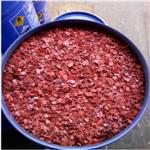 |
2024-10-24 | Chromium(VI) oxide
1333-82-0
|
US $1378.00-1370.00 / Tons | 1Tons | 99.99% | 100Tons | Hebei Dangtong Import and export Co LTD | |
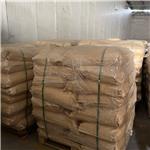 |
2024-10-11 | Chromium(VI) oxide
1333-82-0
|
US $10.50 / KG | 1KG | 99% | 10 ton | Hebei Chuanghai Biotechnology Co,.LTD | |
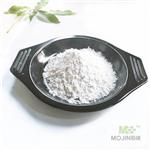 |
2023-08-29 | Chromium(VI) oxide
1333-82-0
|
US $0.00 / KG | 1KG | 99% | 50000KG/month | Hebei Mojin Biotechnology Co., Ltd |
-

- Chromium(VI) oxide
1333-82-0
- US $1378.00-1370.00 / Tons
- 99.99%
- Hebei Dangtong Import and export Co LTD
-

- Chromium(VI) oxide
1333-82-0
- US $10.50 / KG
- 99%
- Hebei Chuanghai Biotechnology Co,.LTD
-

- Chromium(VI) oxide
1333-82-0
- US $0.00 / KG
- 99%
- Hebei Mojin Biotechnology Co., Ltd
1333-82-0(Chromium(VI) oxide)Related Search:
1of4





